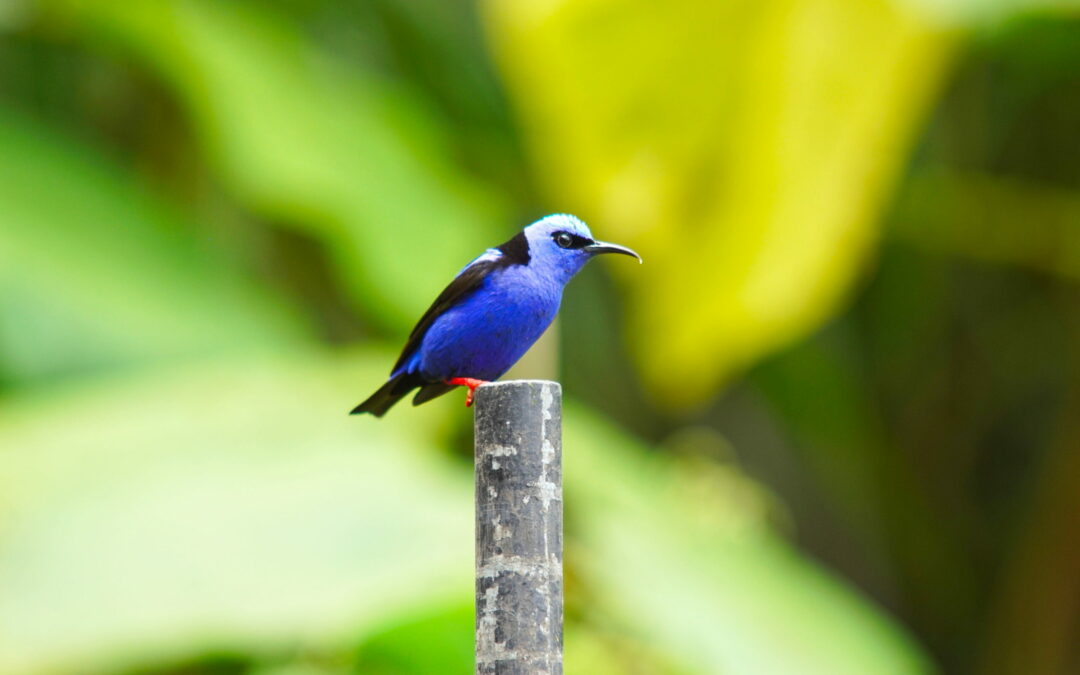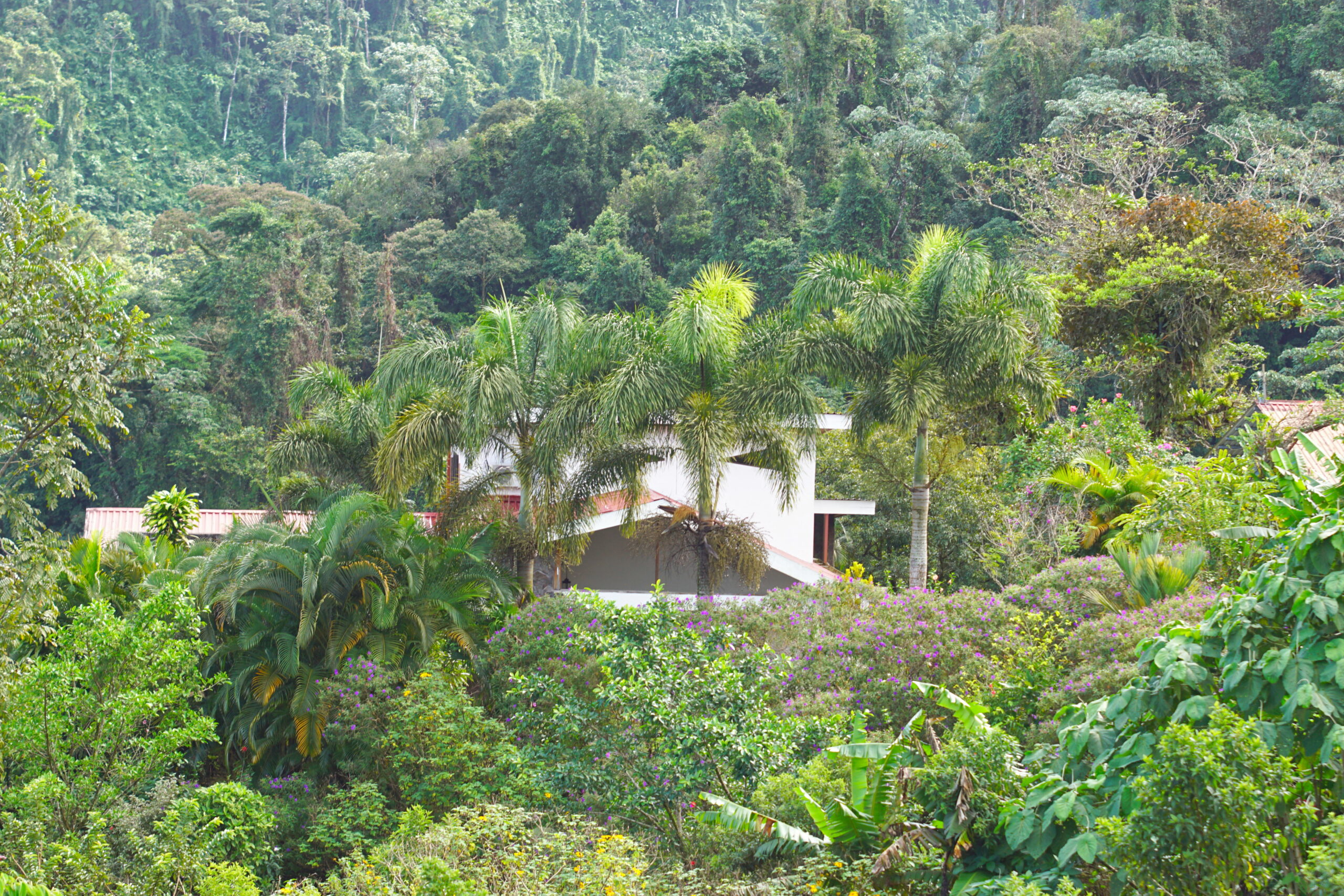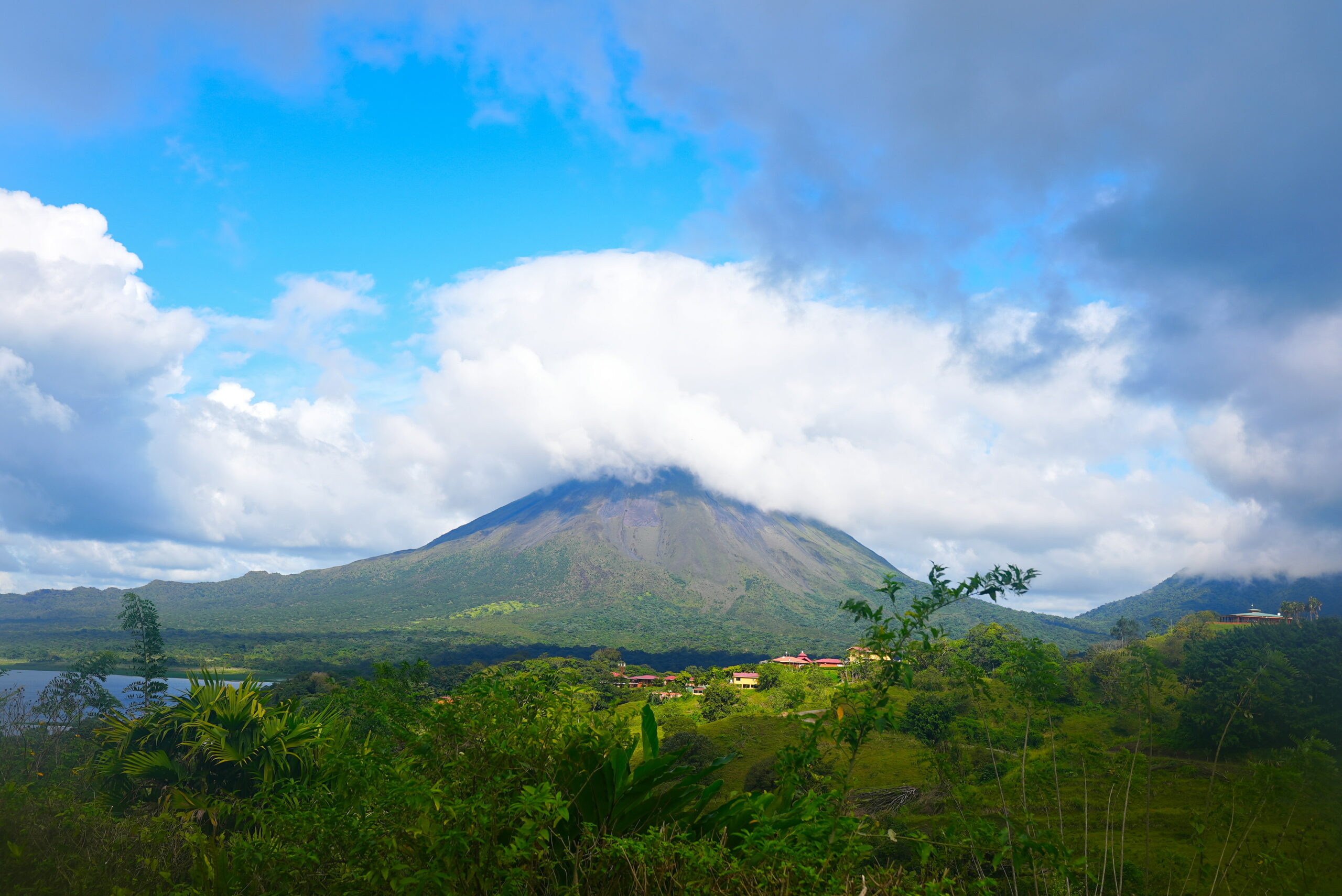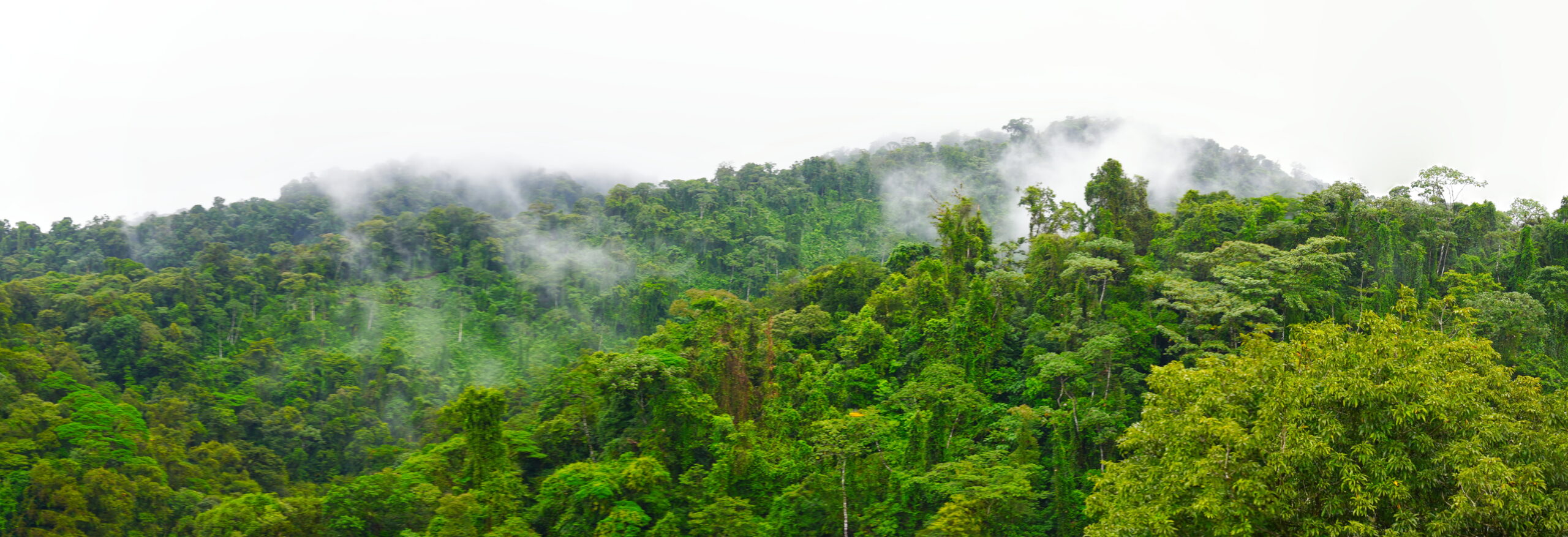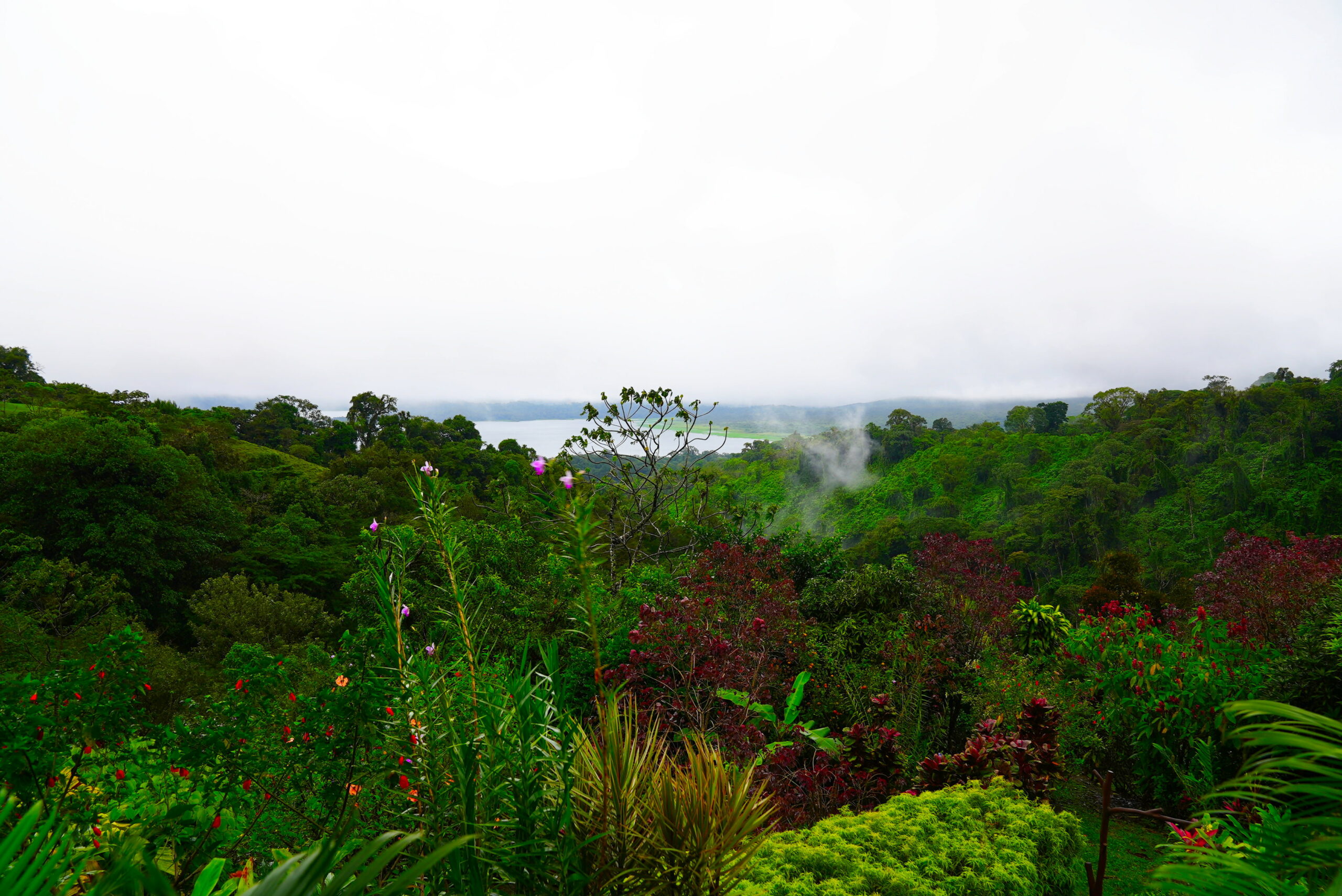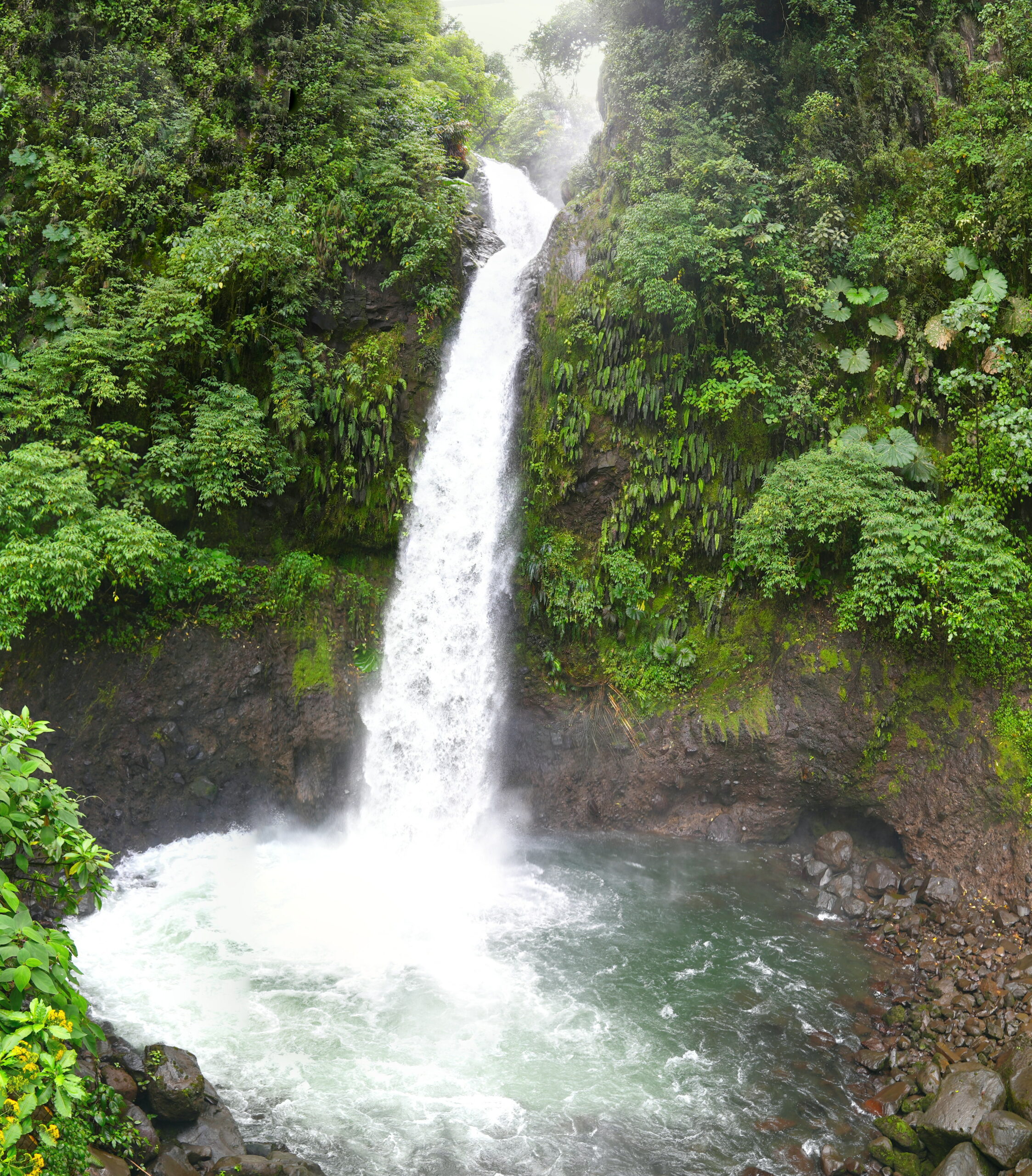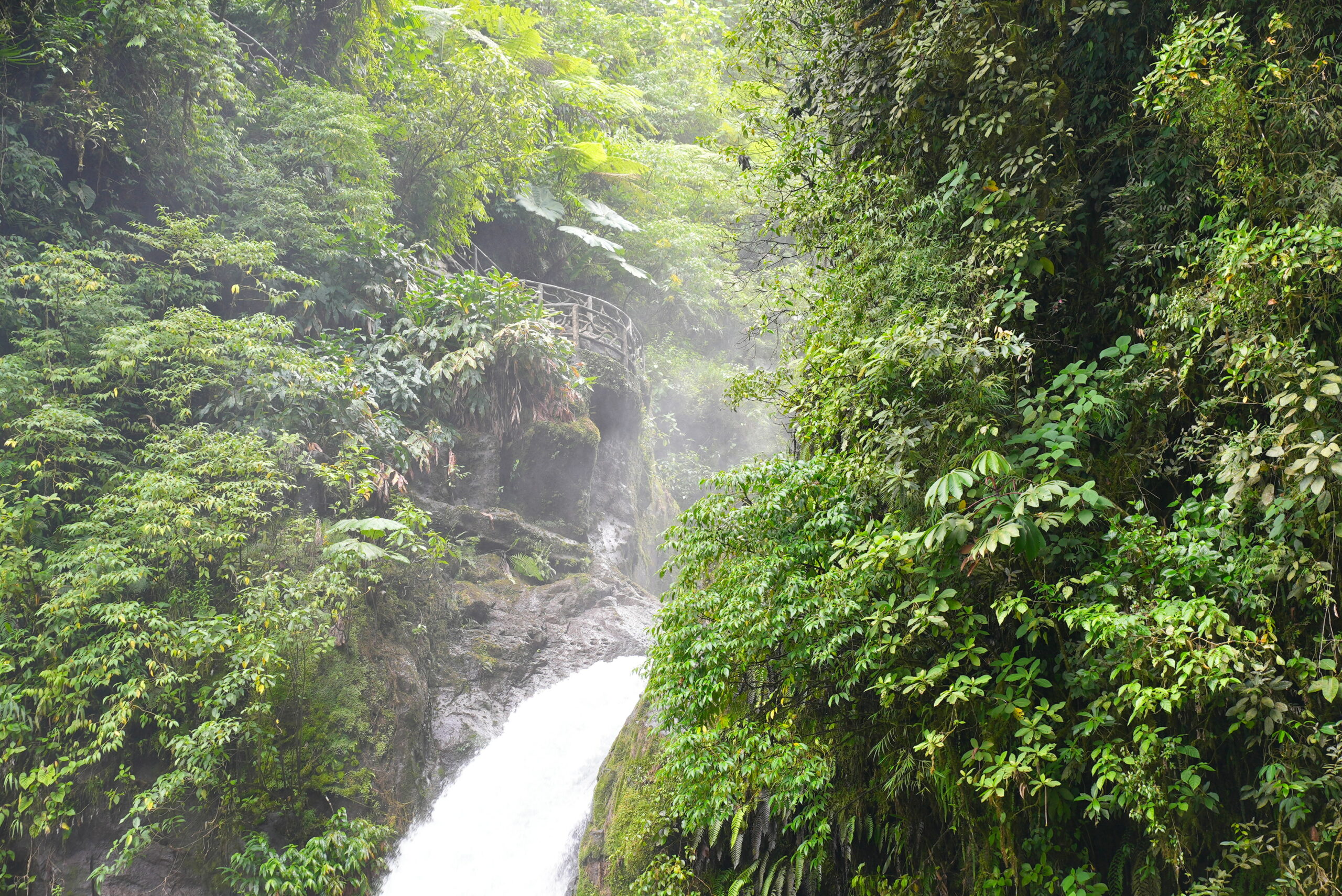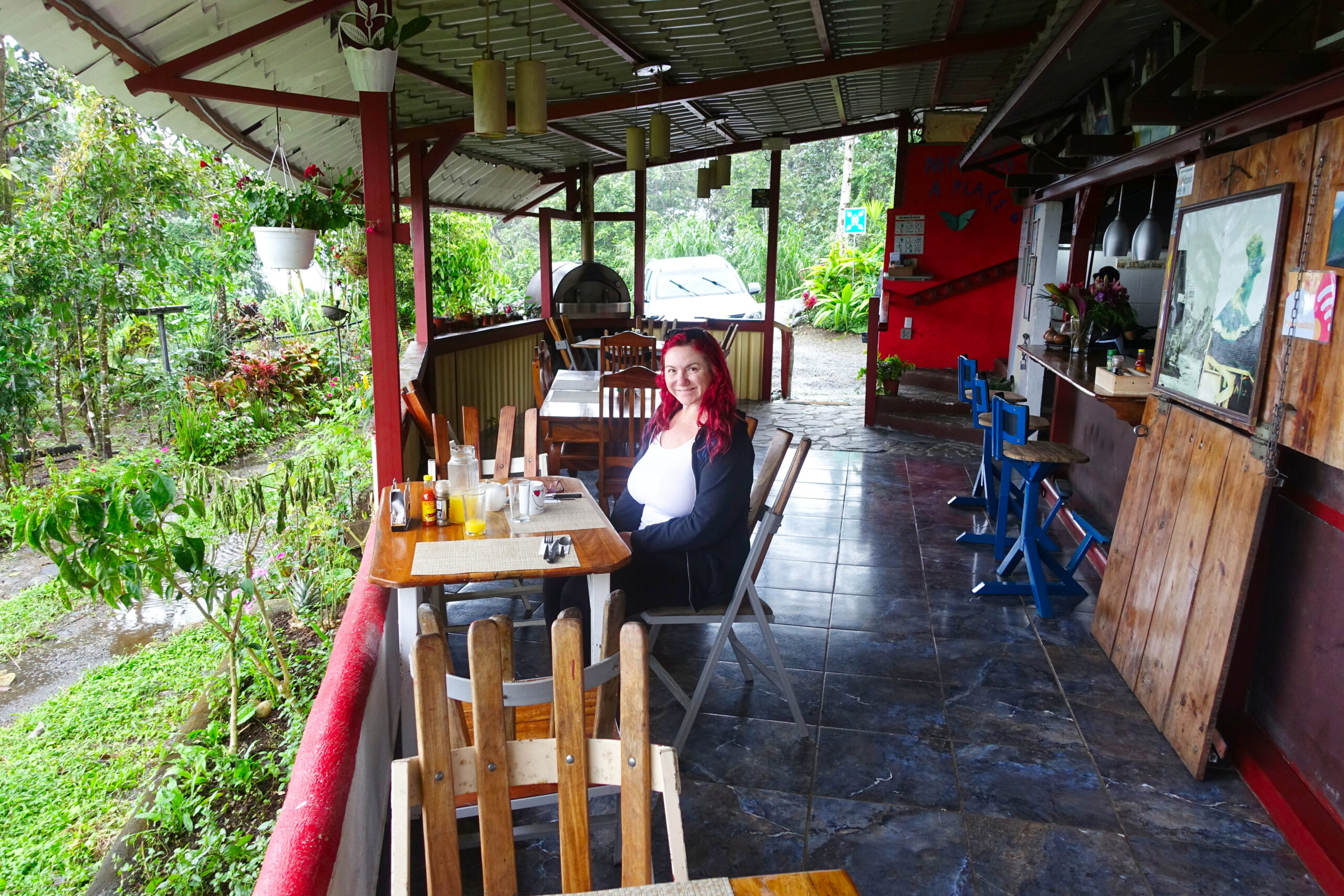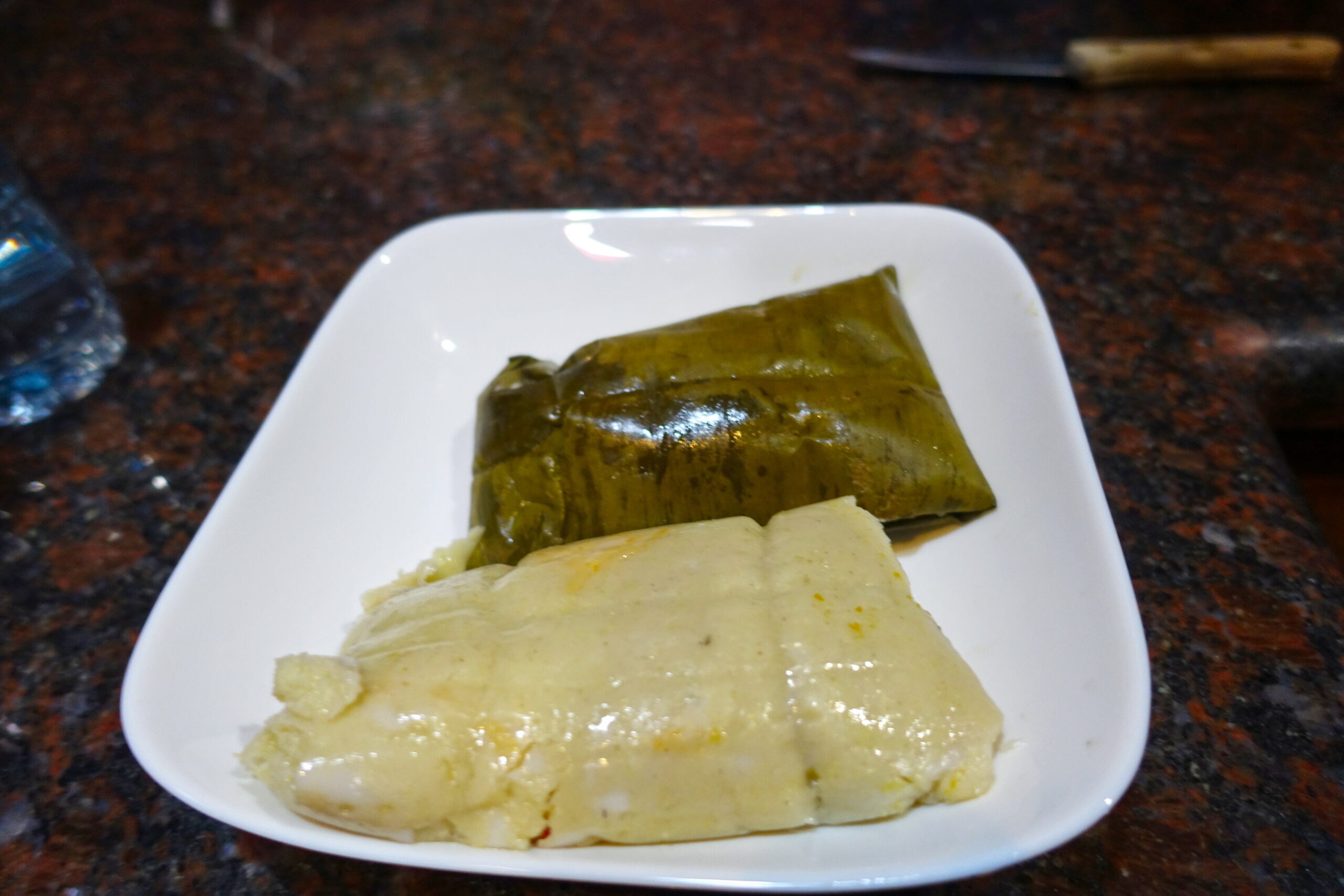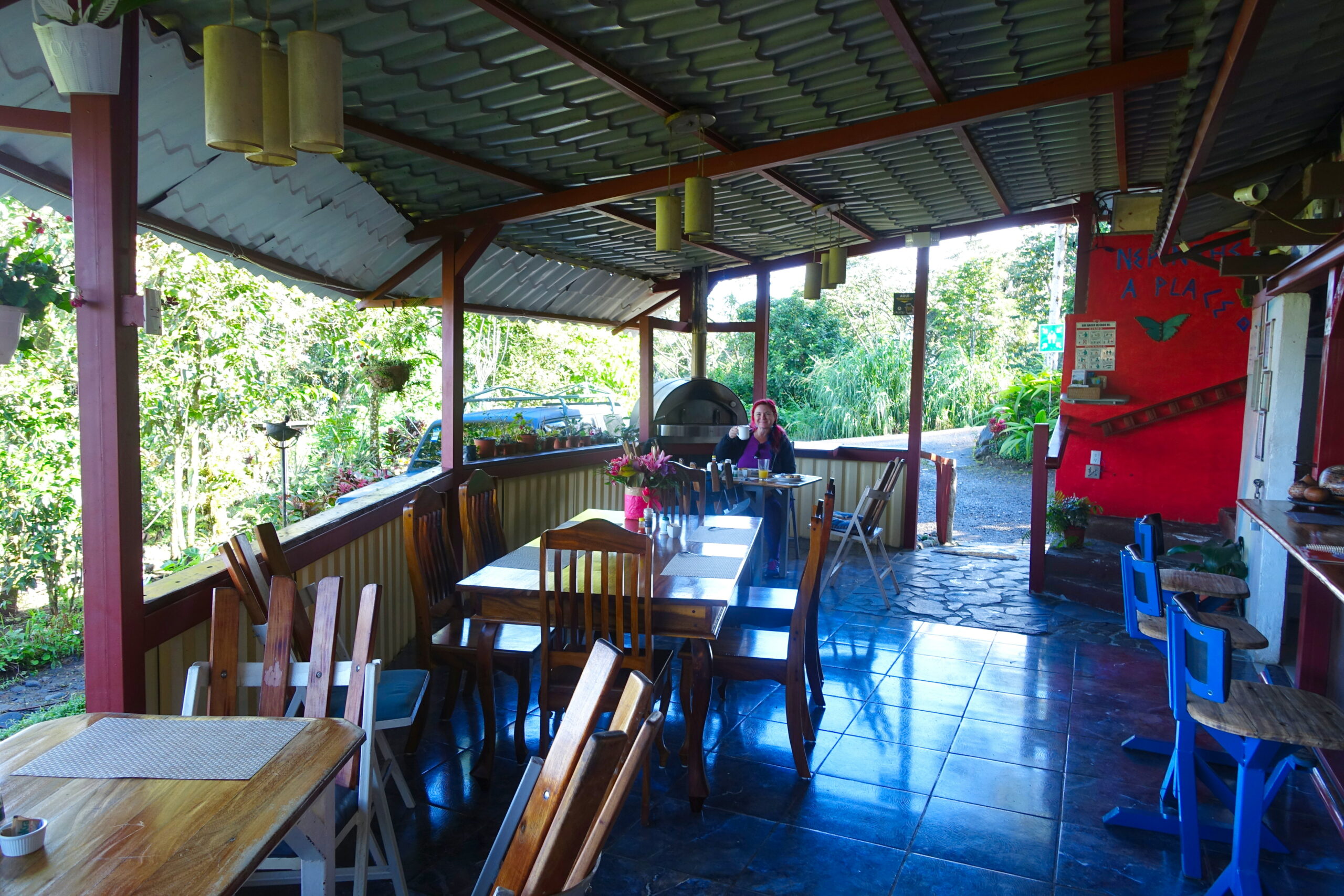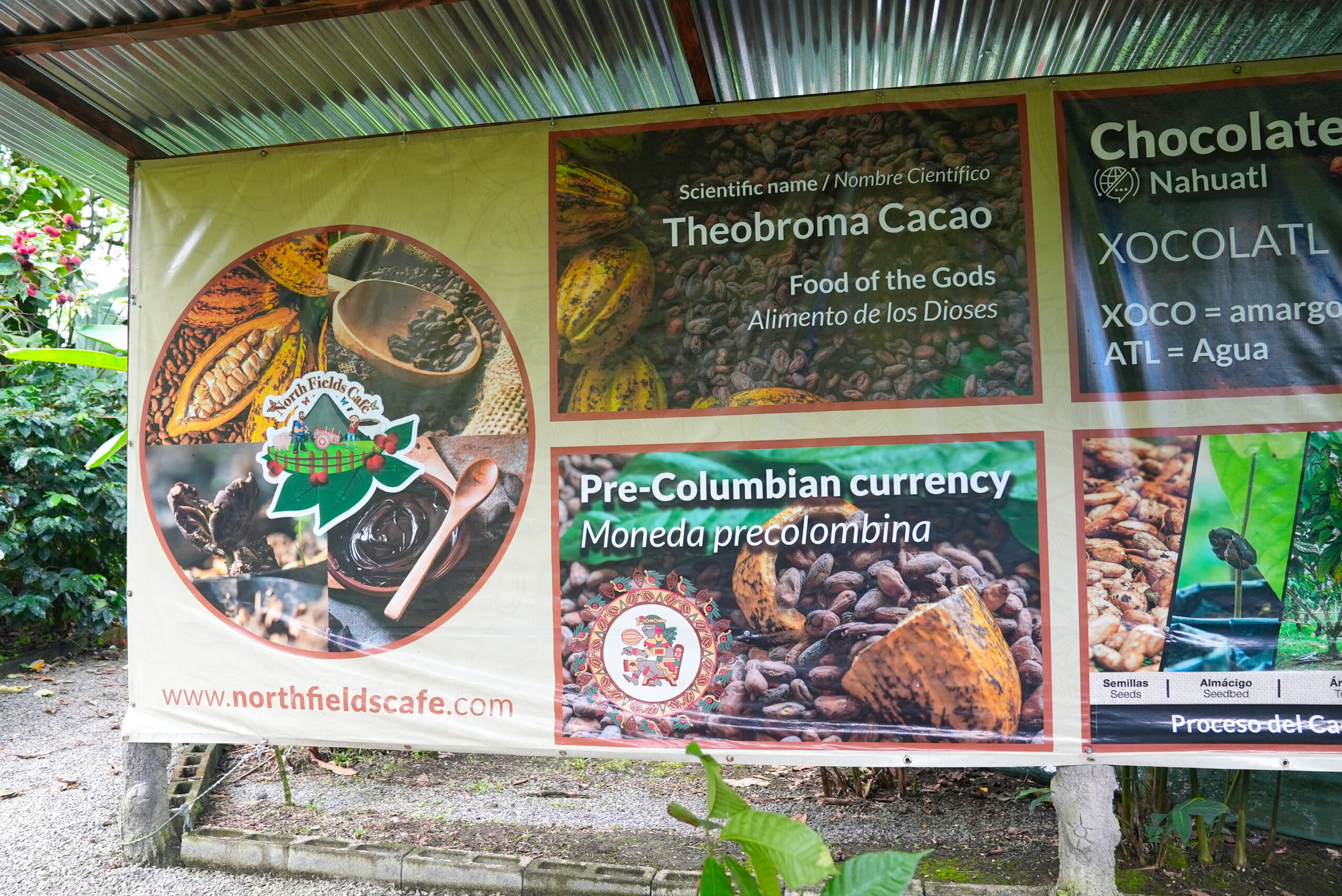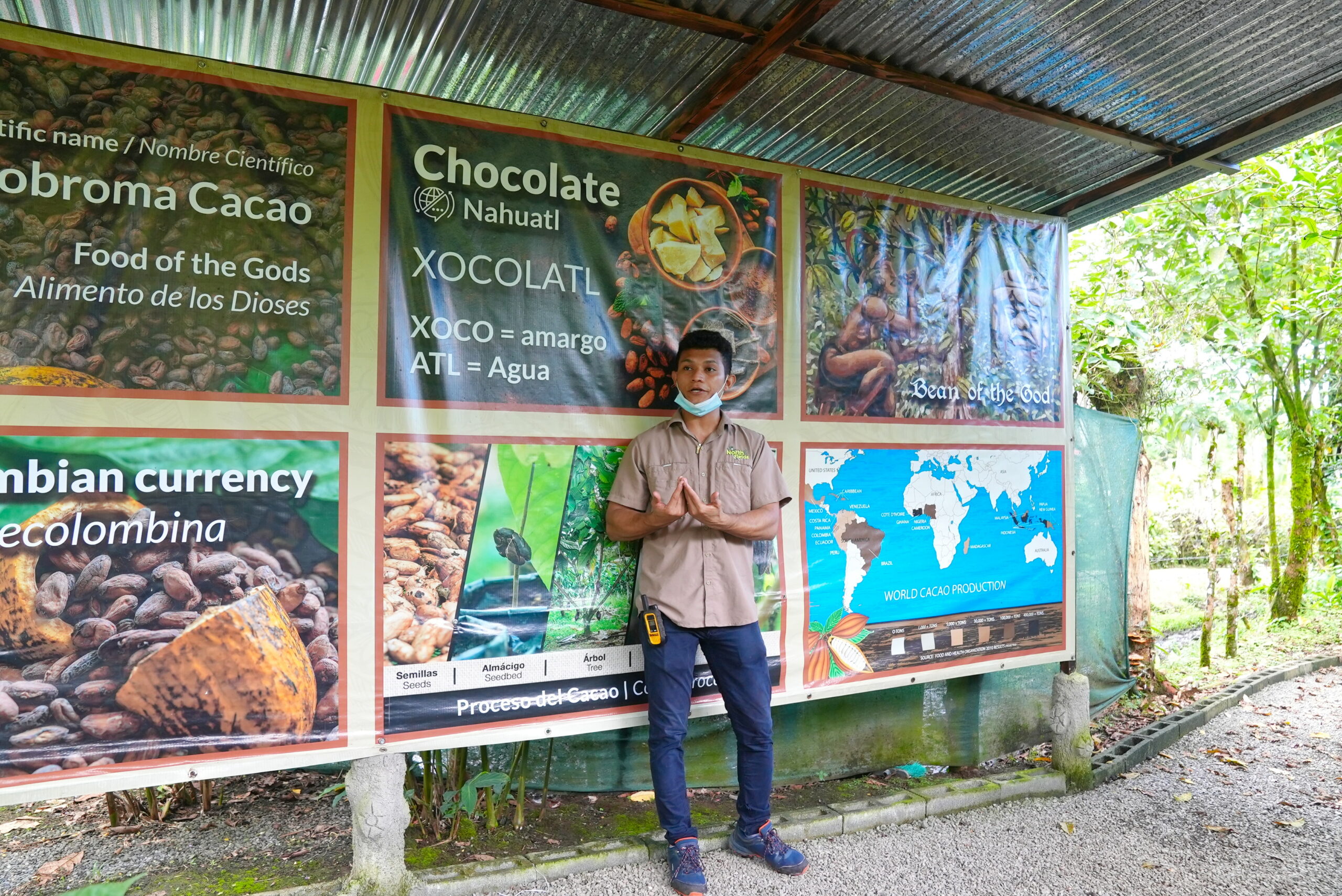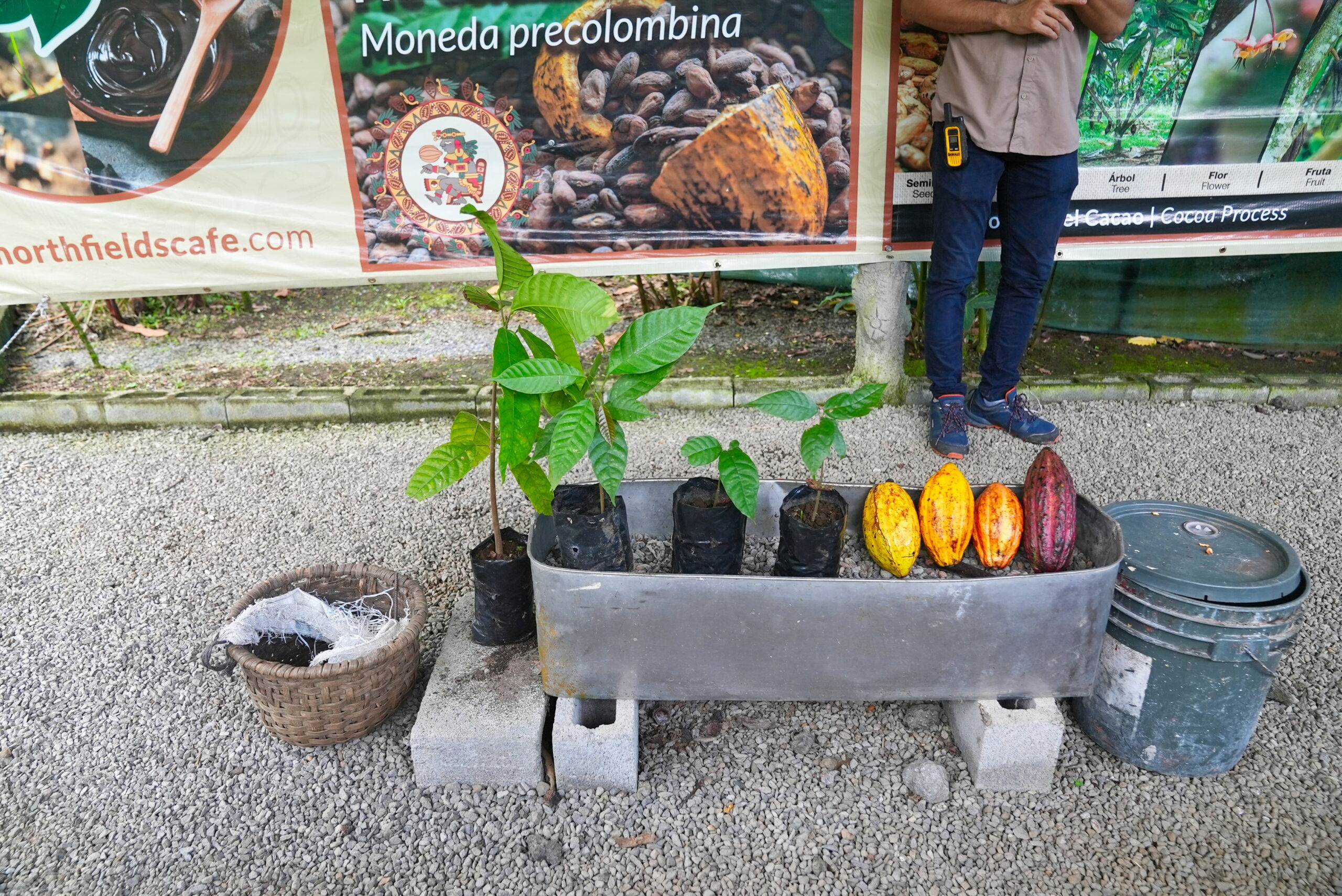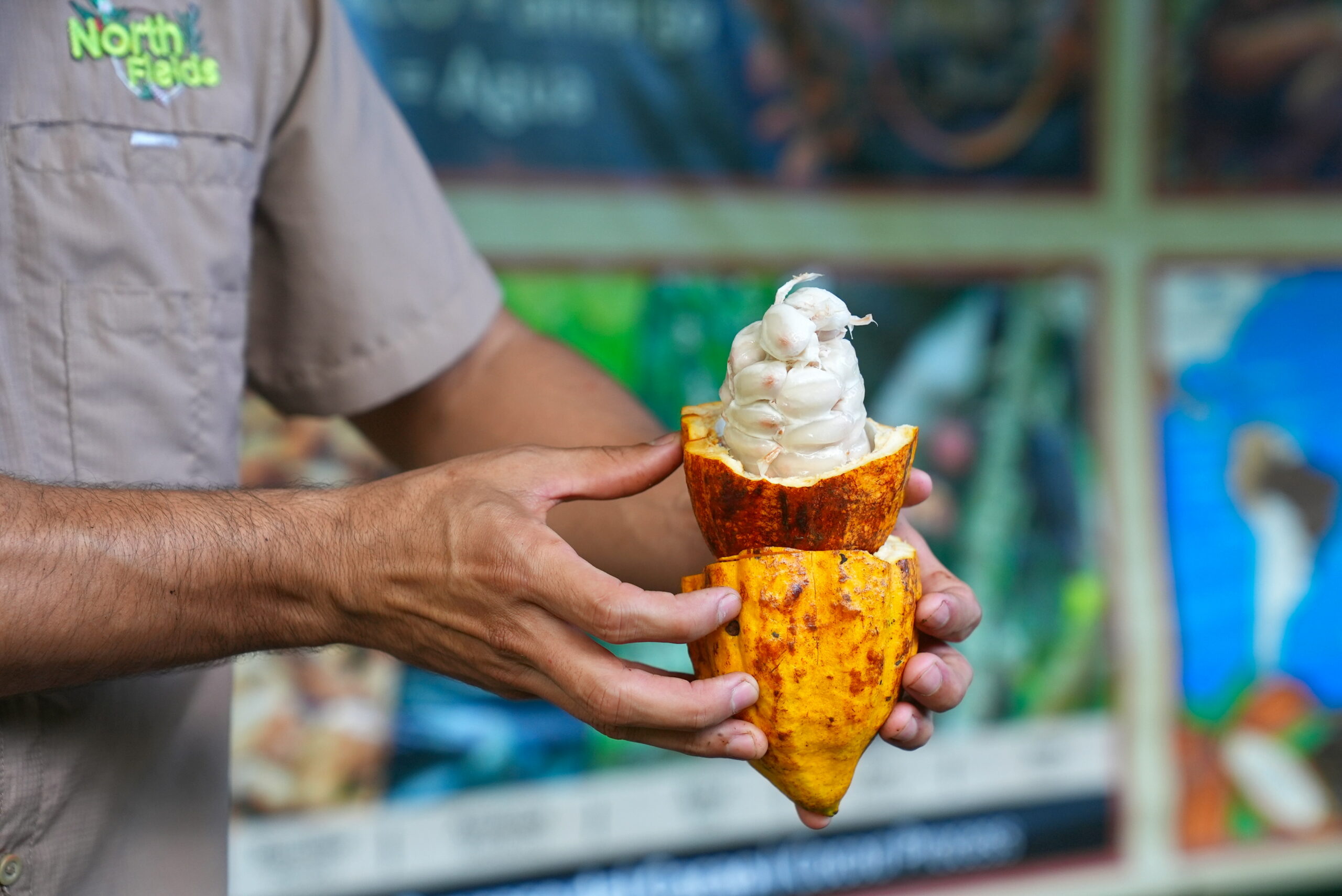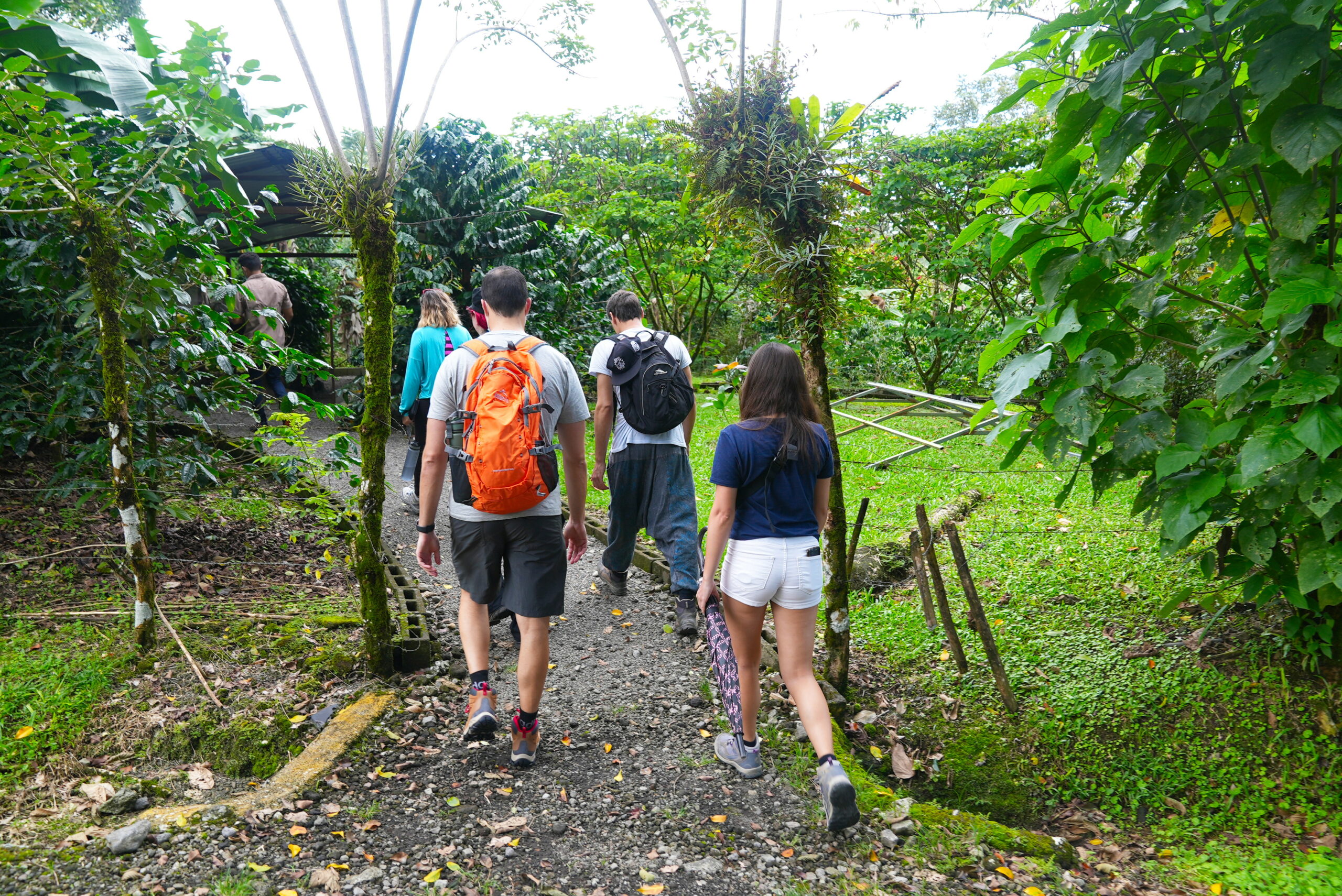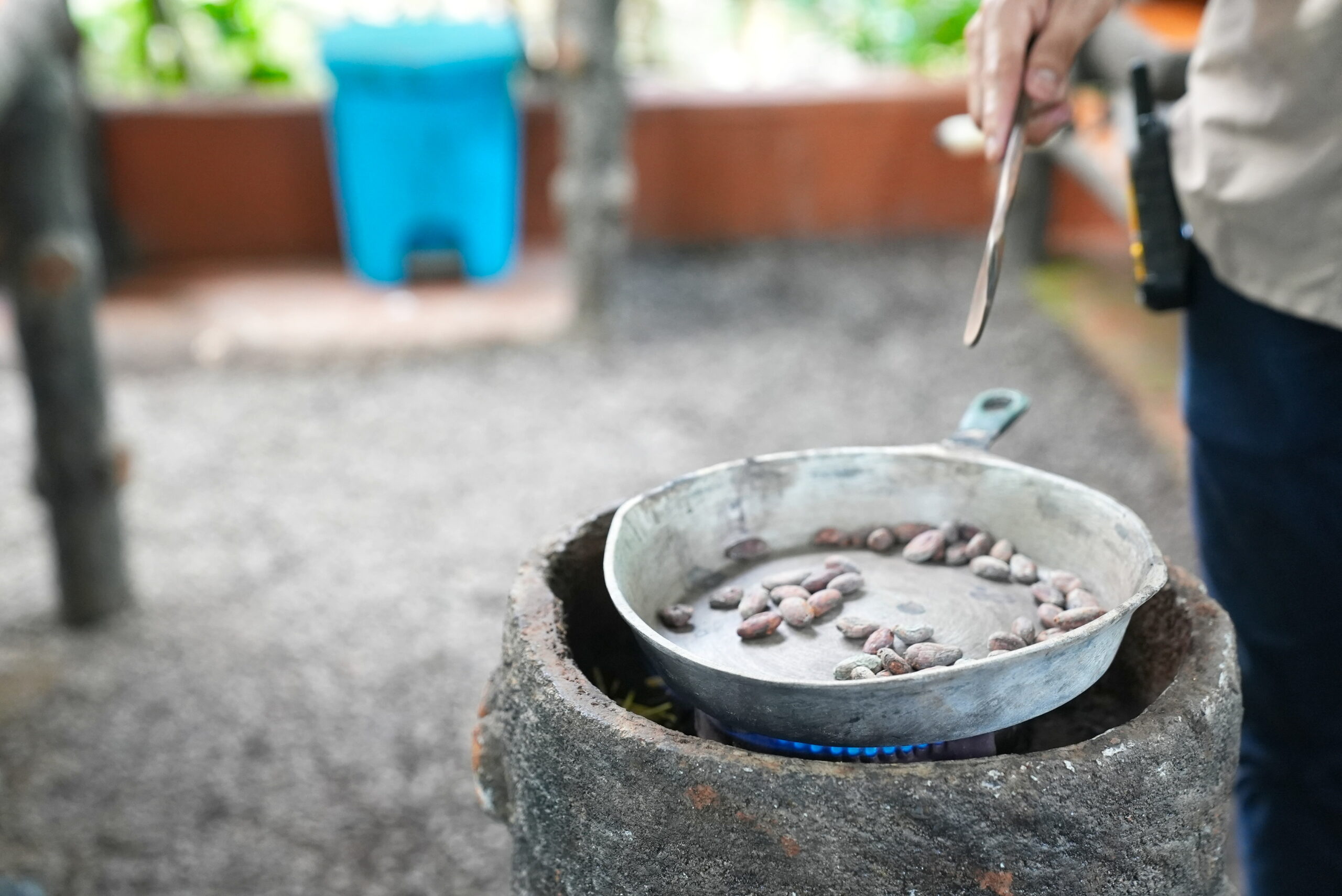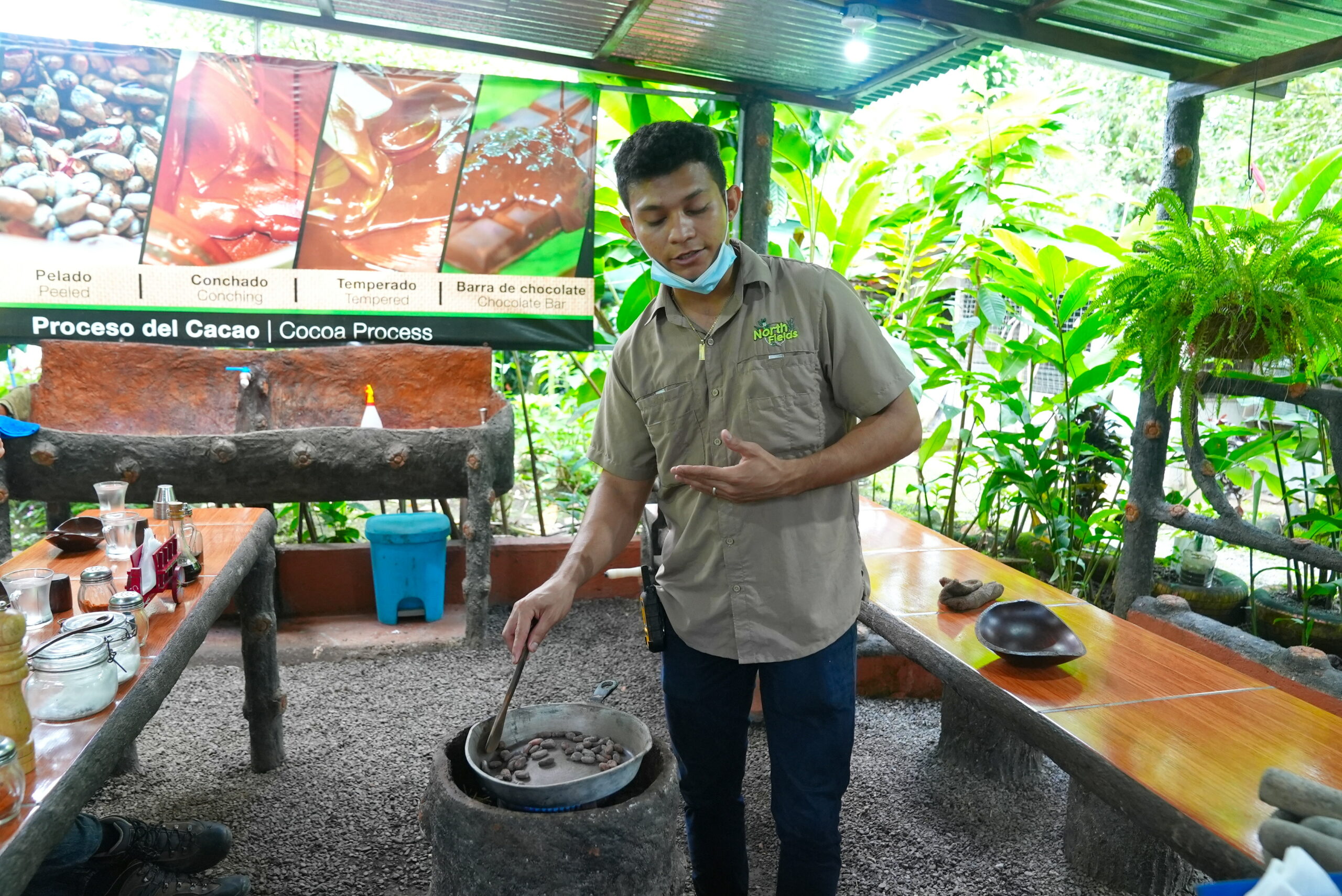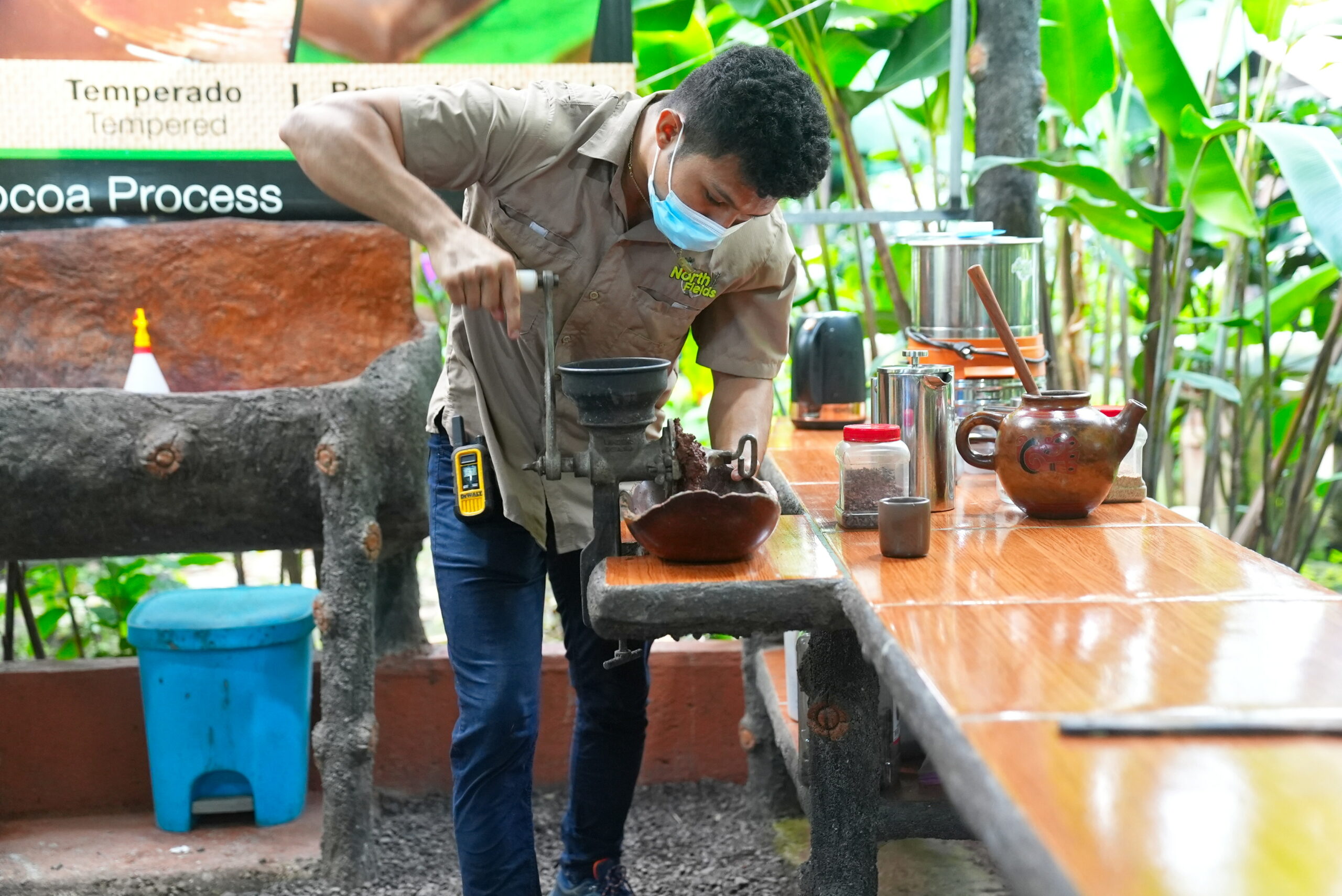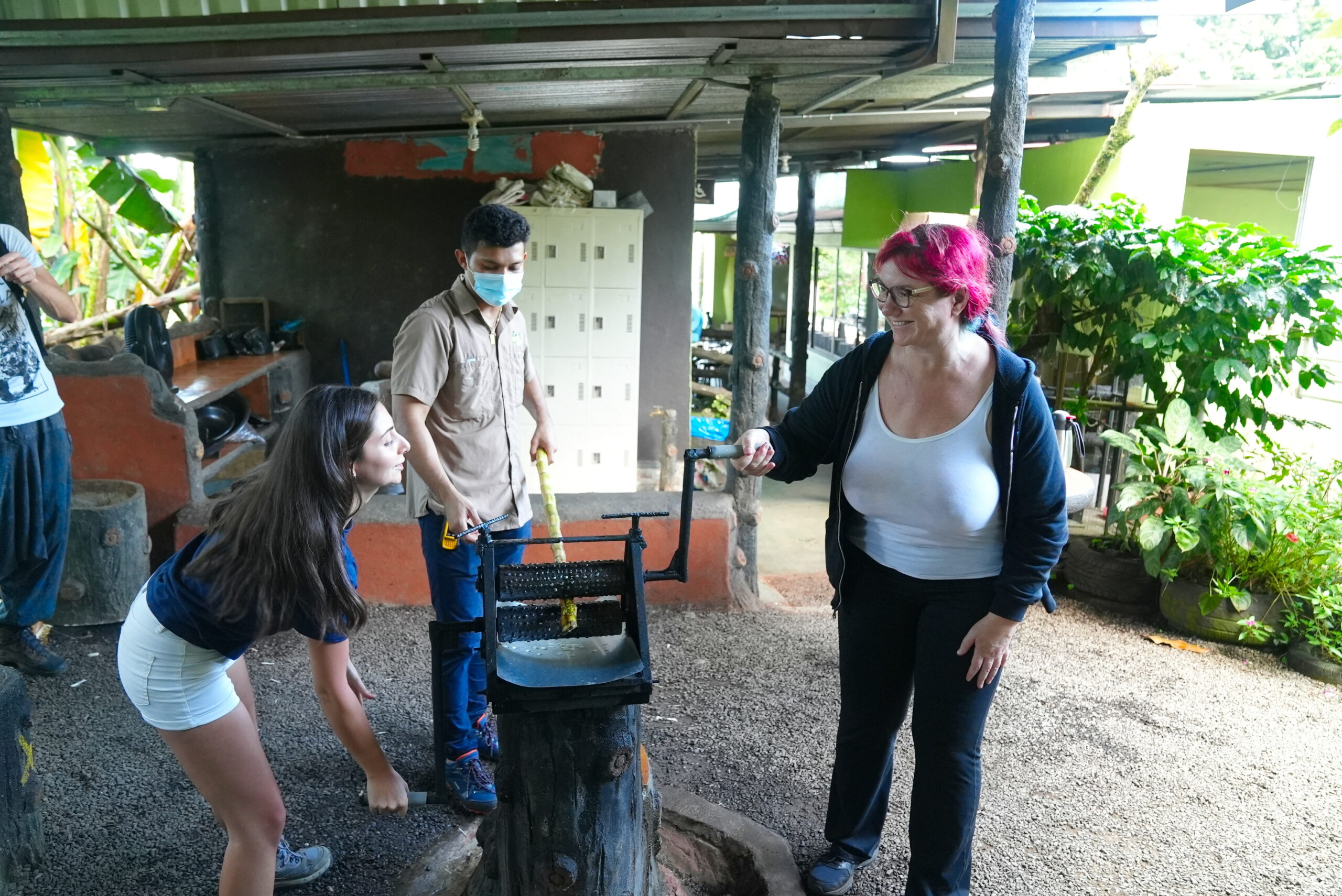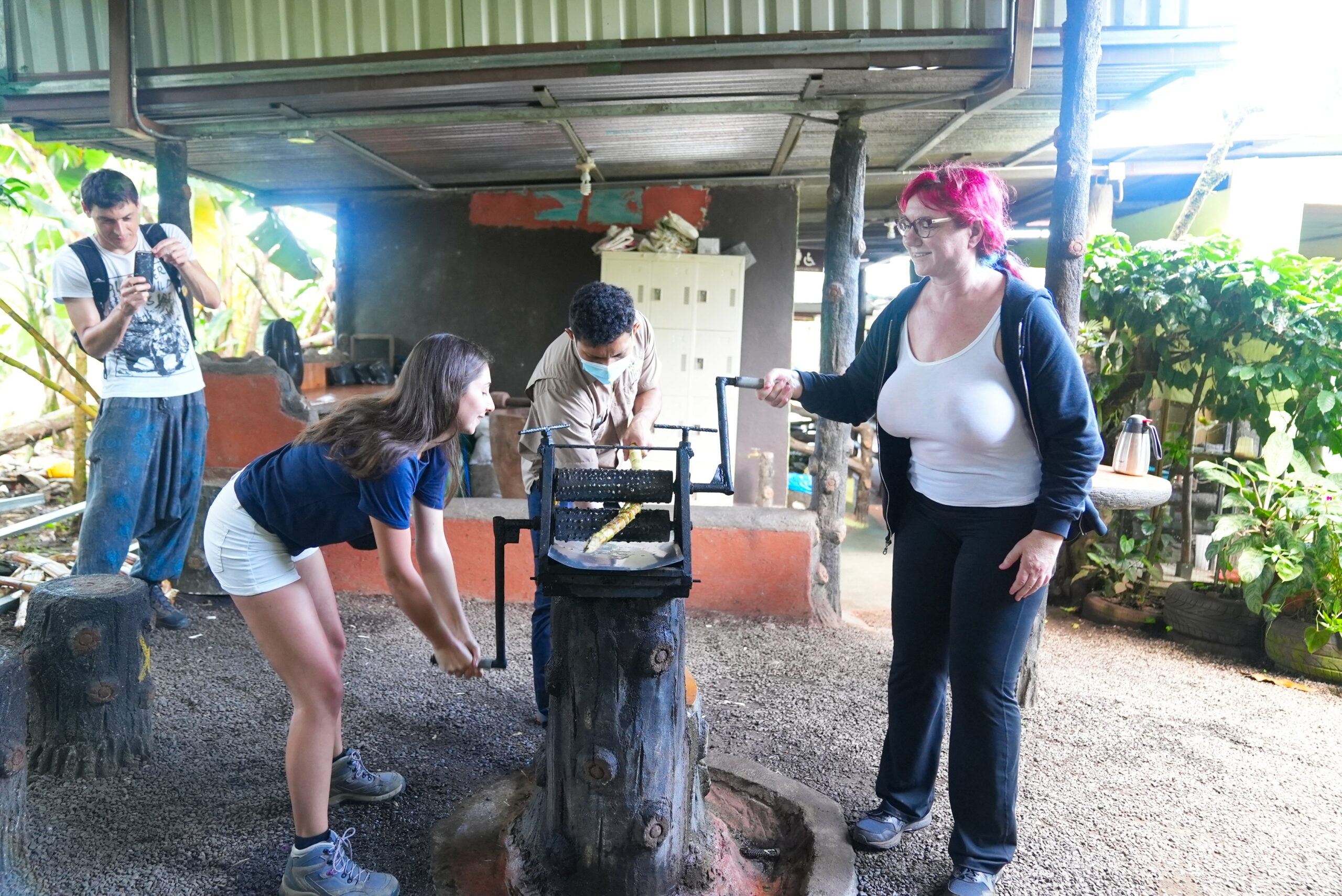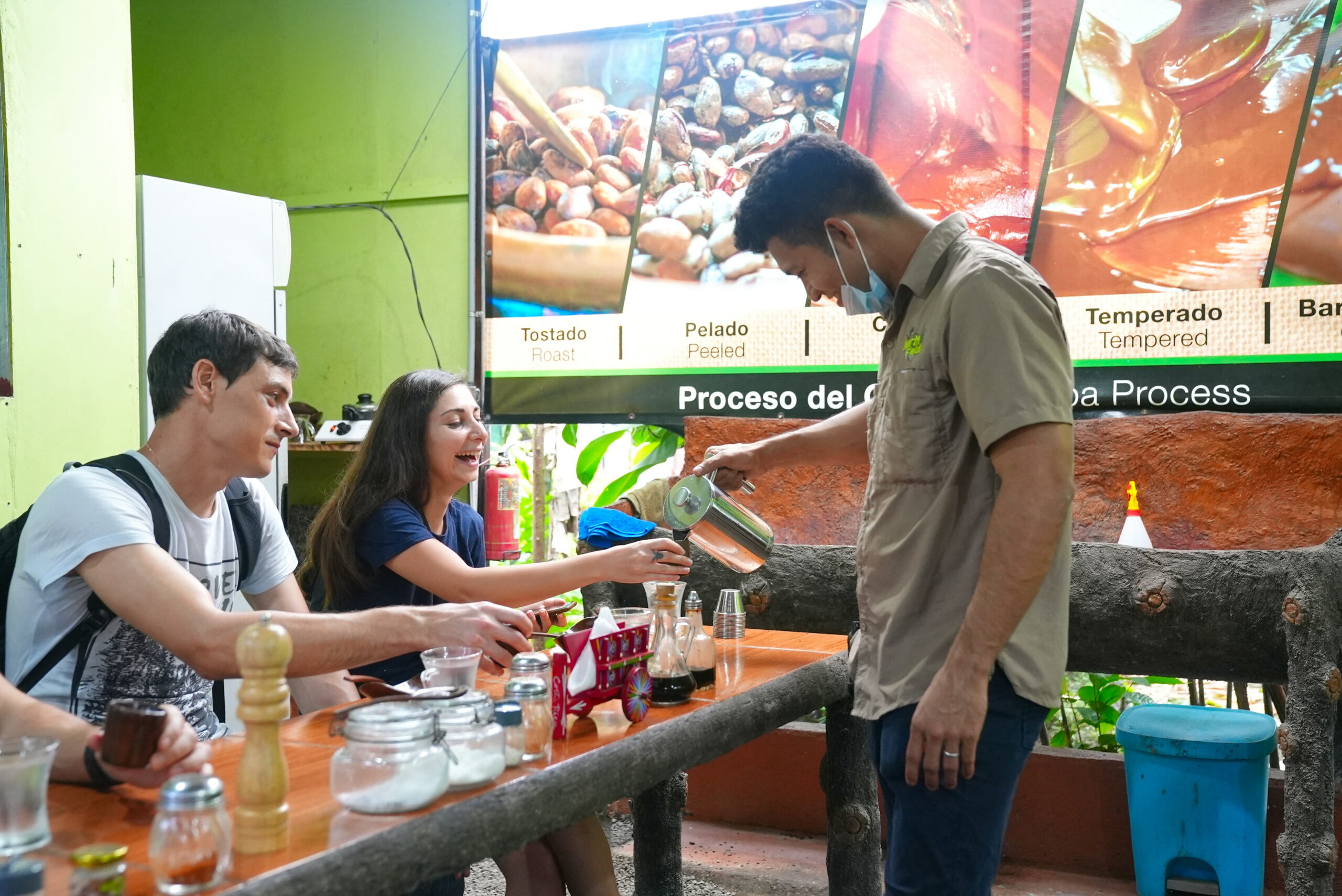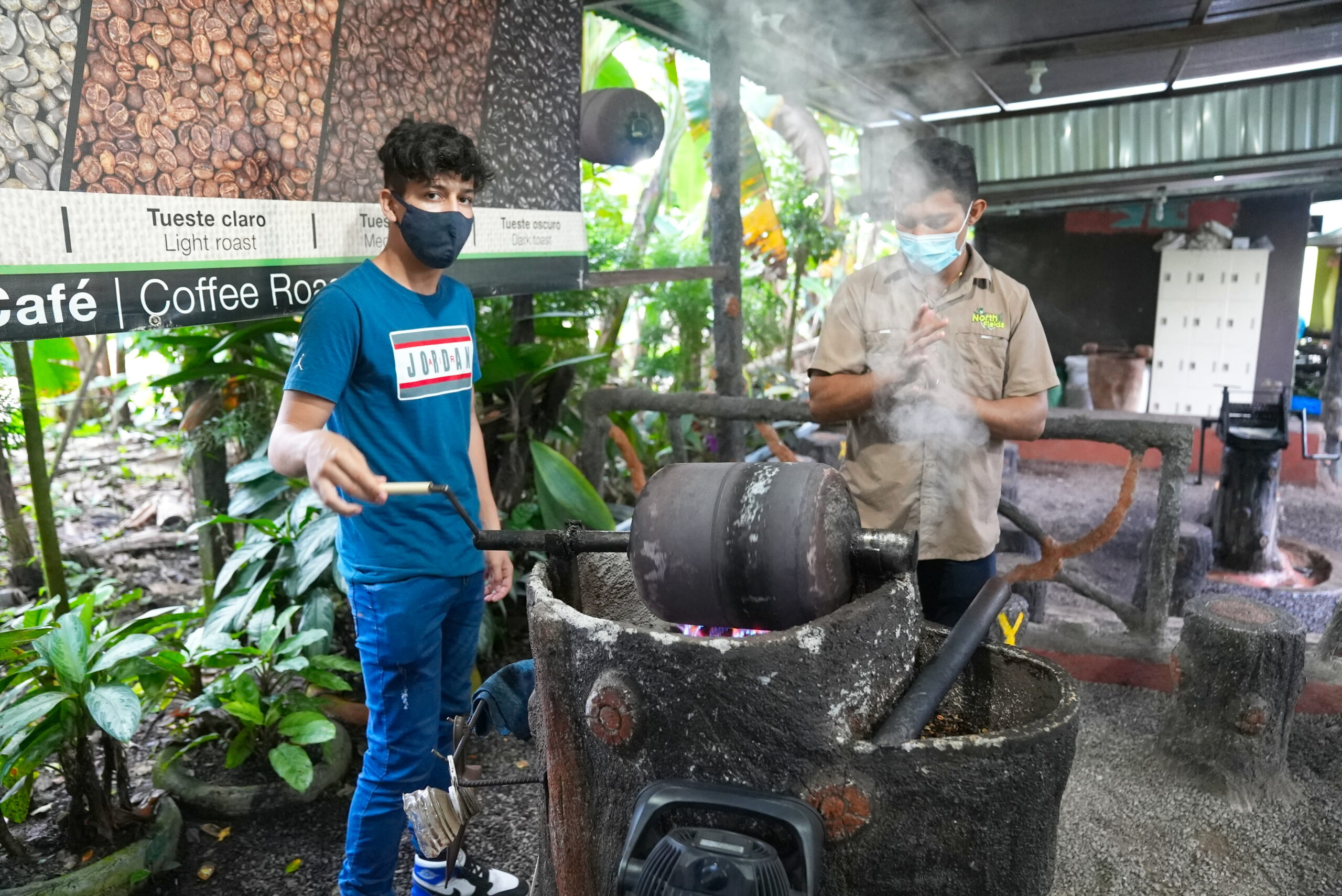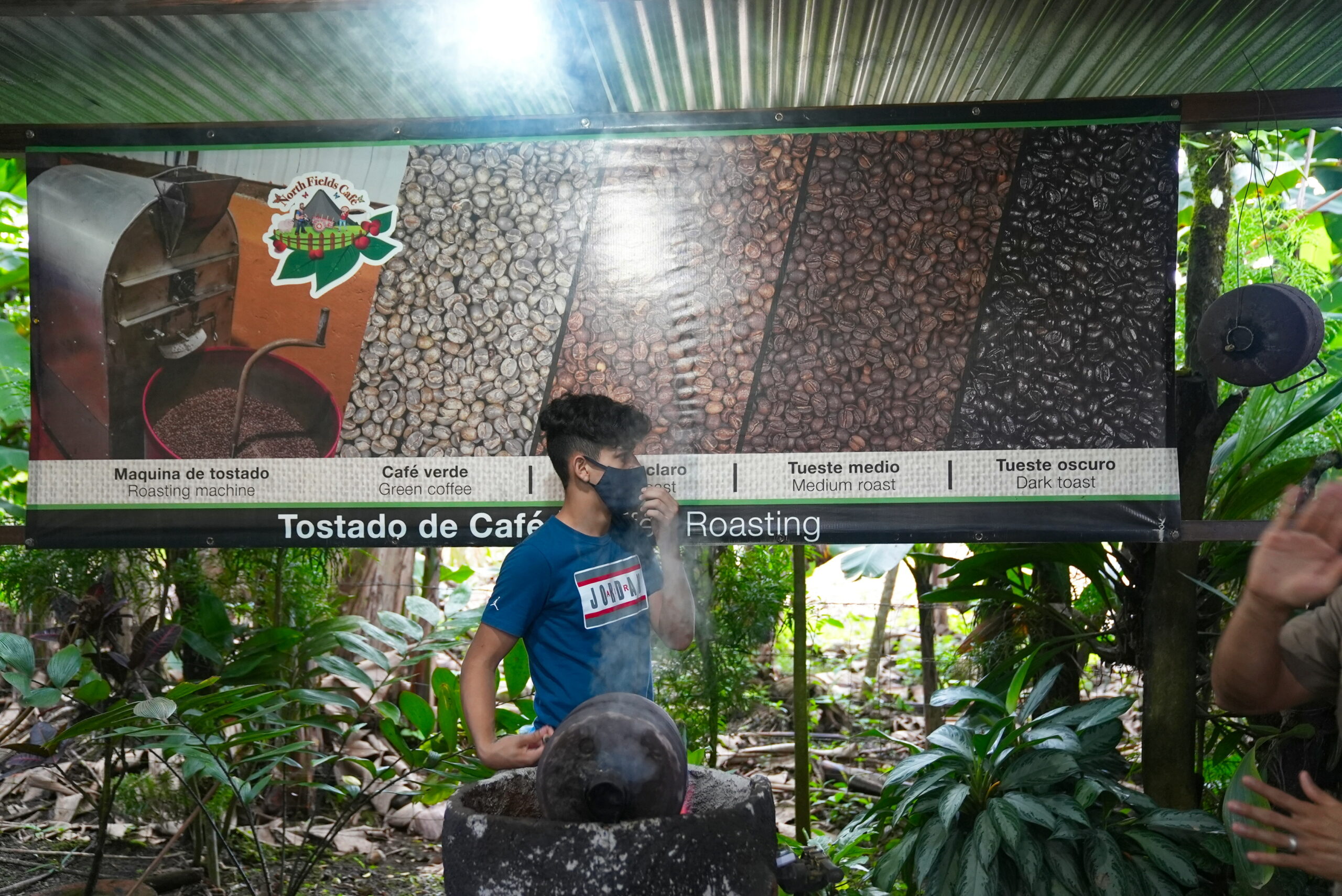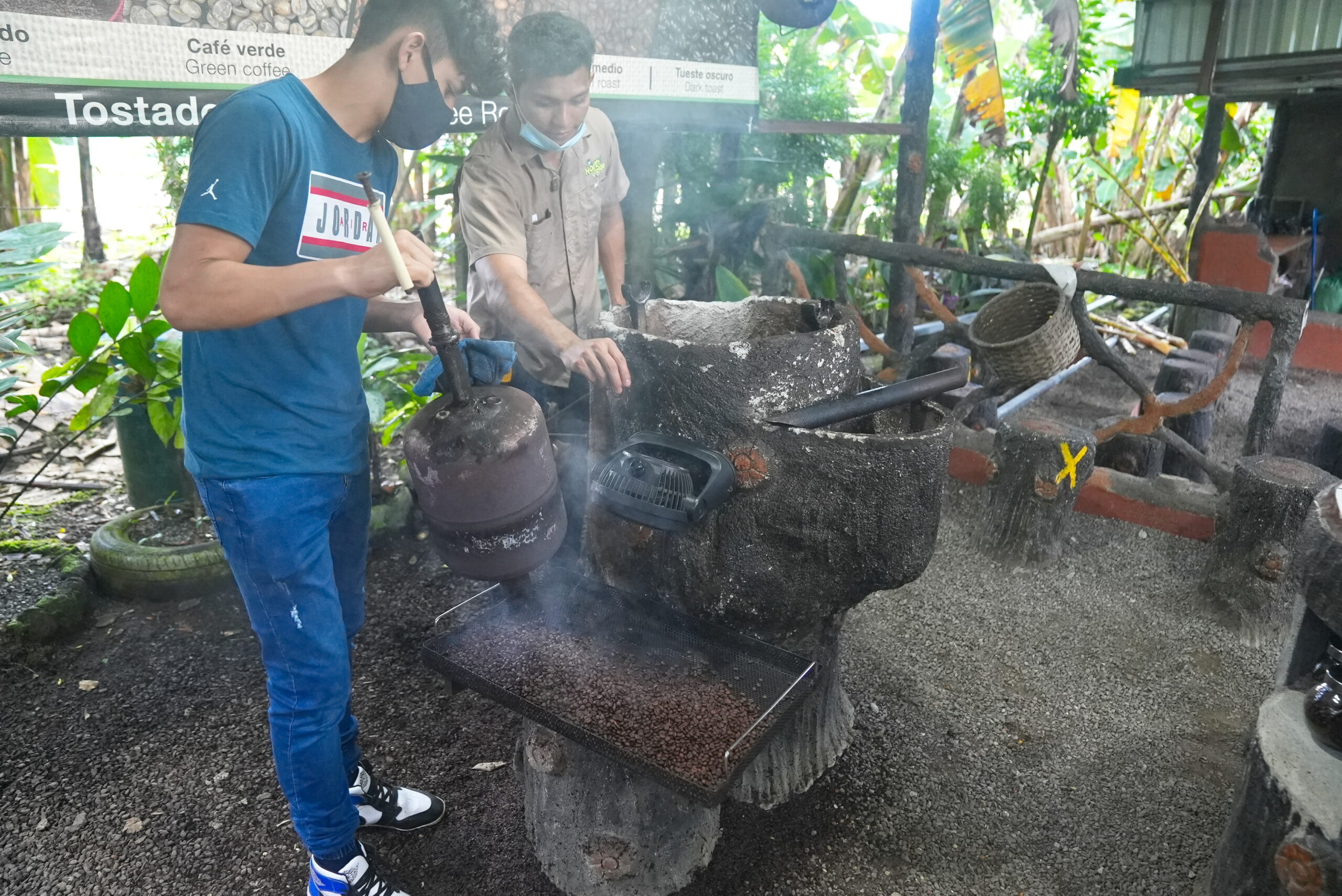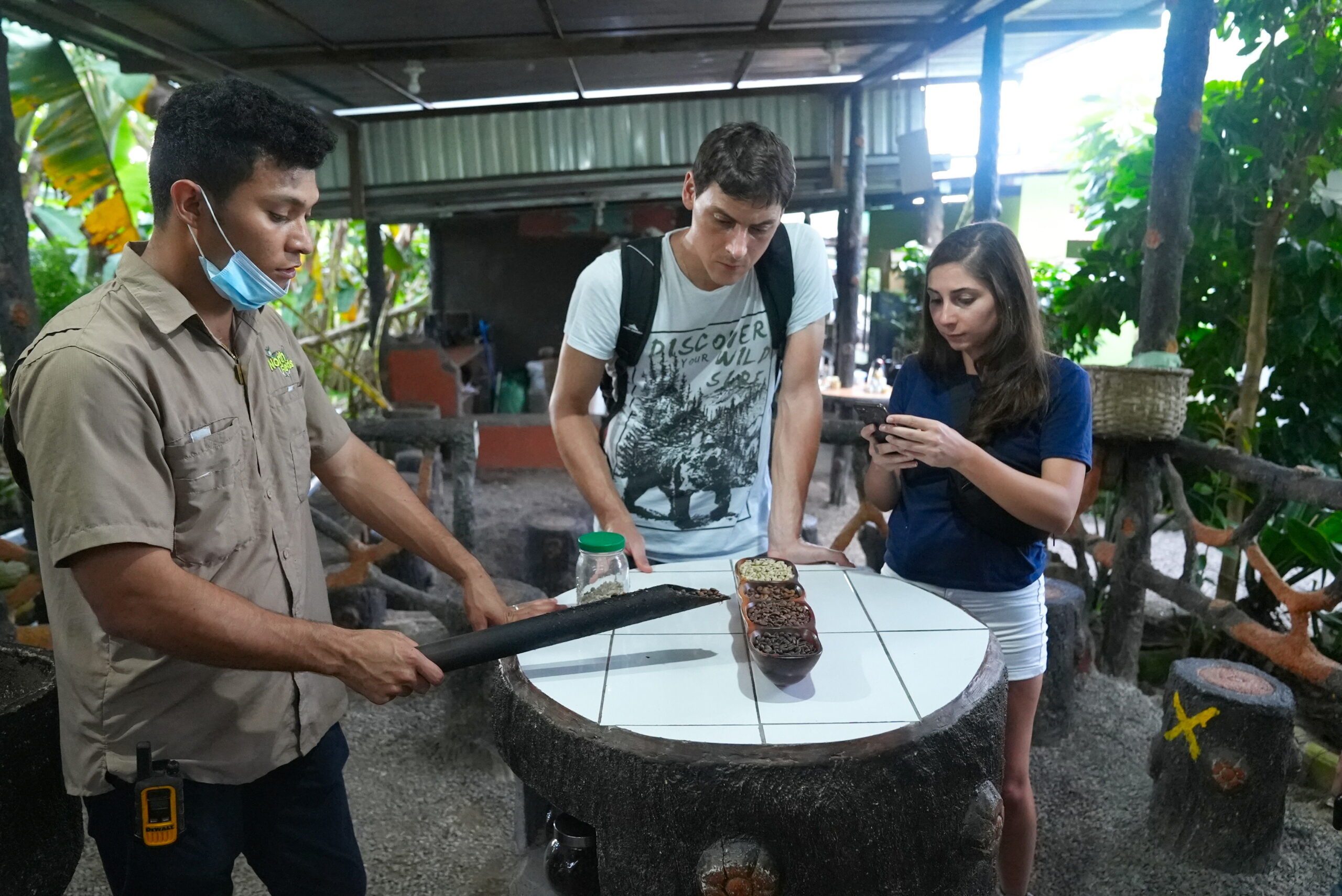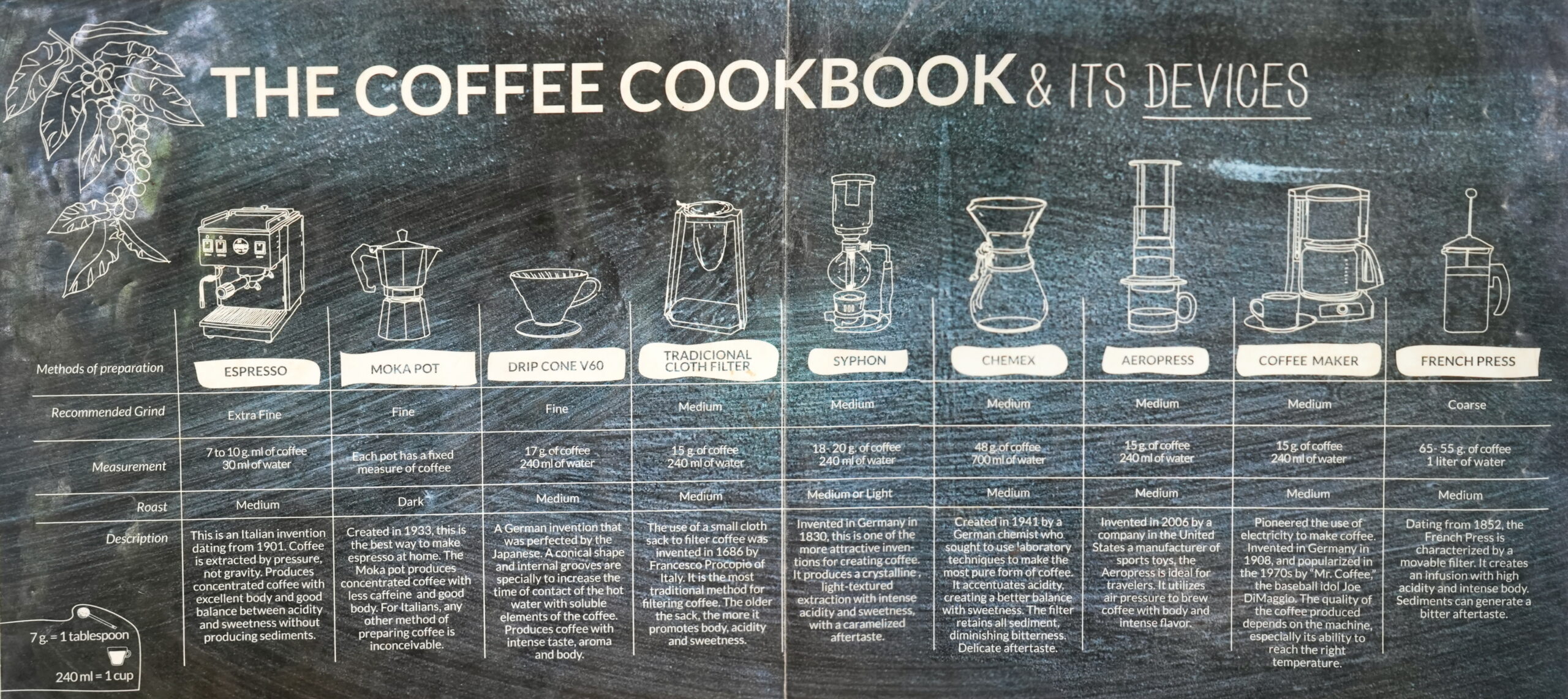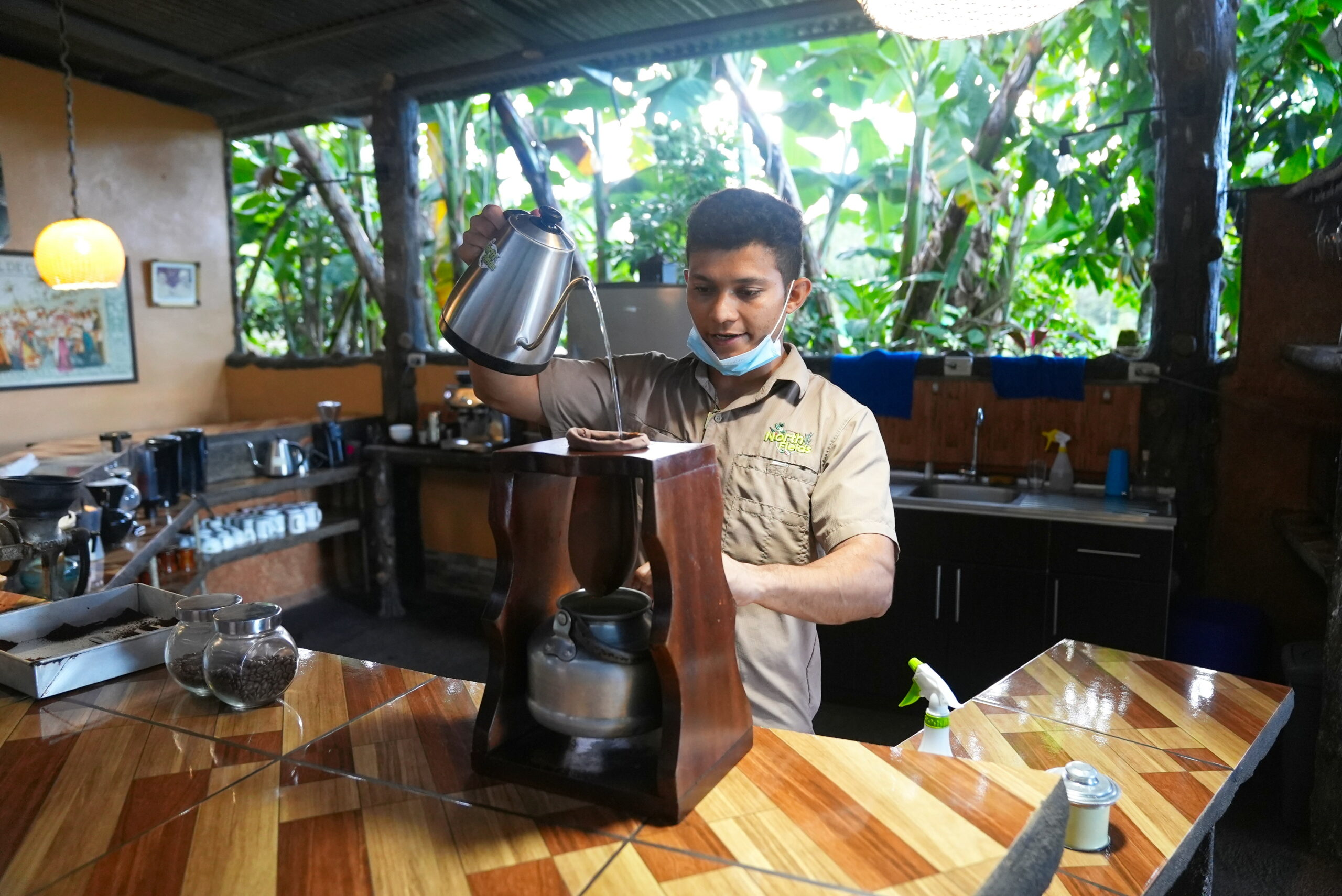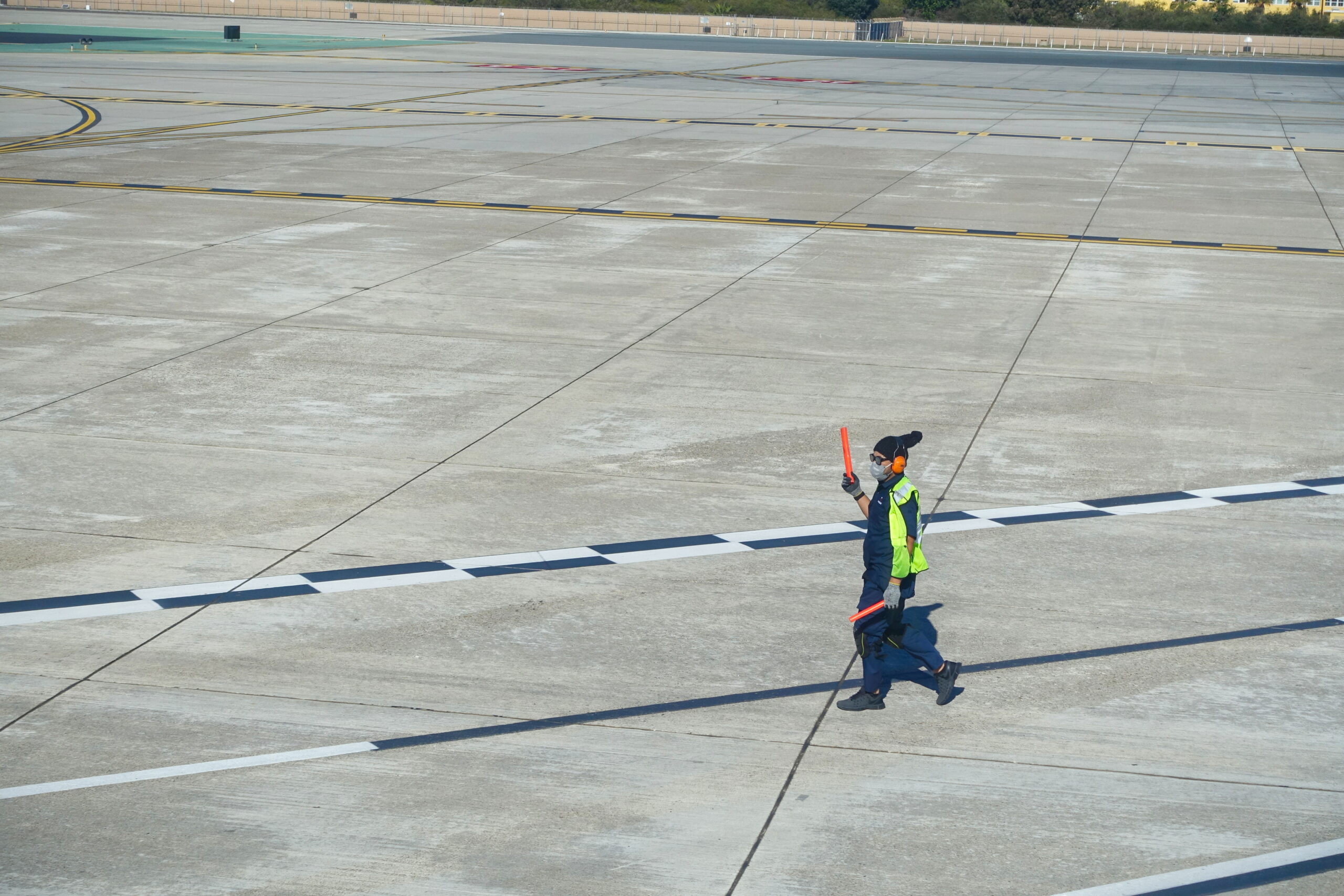Costa Rica is a small country in Central America that is famous for its wildlife, lack of a military force, bordering two oceans, and, of course, pura vida. So, let’s visit this tropical paradise.
But…before we get started, I want to give a shout-out to the folks at My Tan Feet (MyTanFeet.com). For more than a year before our trip, we read articles on their website and got great advice on car rentals. (We tipped them generously when we returned from our trip.) We highly recommend their website and them for their trustworthy and up-to-date information. (This is not a paid advertisement and we receive no compensation for promoting this service. These folks really are good!)
Our first stop is the area near La Fortuna, a small town famous for its fantastic outdoor adventures, beautiful scenery, natural hot springs, and stunning Arenal Volcano views.
Okay, so, this is our place!
Yup, we need a 4-wheel drive vehicle to get here, even when the (dirt) road is dry. So, why this place?
They advertised that it has a great view, and they are correct.
Here we see, from our balcony, Volcán Arenal, an active andesitic stratovolcano, measuring at least 1,633 meters high. It is conically shaped with a crater 140 meters in diameter. Geologically, Arenal is considered a young volcano and it is estimated to be less than 7,500 years old.
The view to the west verifies that we are in a tropical jungle.
We are here in December, which, in this part of the country, is the dry season. You will see from the photographs that it is not.
In fact, this is the more common view that we have. Yes, it’s warm-ish, and we can sit and enjoy the sounds of the rain, birds, and insects, but that first view of the volcano was a one-time event. Still, we won’t let a little rain ruin our fun, will we? Well, a lot of rain. But still….
Near out place is this random waterfall. This is a stitched-together panorama (thank you, Affinity Photo) and somewhat foreshortened. It’s actually very tall.
We can see there is a look-out point, so there must be a trail, but we can’t find the trailhead. Yup, jungles are pretty jungle-y.
Within walking distance (or driving distance, when it’s raining) of our place is a small restaurant where we can get breakfast while watching the wildlife (mostly birds). There are surprisingly few insects to worry about.
Traditional breakfast here includes corn tamales (the yellow thing) wrapped in a banana leaf (the green thing). Other common treats include Gallo Pinto (rice and beans), plantains, and empanadas.
Of course, no breakfast is complete without a good cup of Costa Rican coffee, amirite? So, let’s talk coffee. And, while we are at it, chocolate.
North Fields Cafe
We visit North Fields Cafe so we can learn about coffee and, conveniently, chocolate. Note that, as of this writing, their website is https://www.northfieldscr.com. Okay, on with the tour.
Our guide is very knowledgeable. We learn a lot. And before we learn about coffee, we learn about chocolate.
Chocolate
Fact: Chocolate is eaten by the Gods. No, not just that one God the Jew and Islam folks worship, or those three Gods the Christians have, but ALL the Gods: Wóden, Tlahuizcalpantecuhtli, Ceridwen, Gong Gong, Isis, Hermes, Vishnu, Kokopelli, Ama-no-Uzume, Ix Chel, Marduk, Odin, Cupid–the list goes on and on.
And the reason is that chocolate is inhumanly bitter. We mortals must add sugar or honey to the concoction to make it palatable.
A cocoa pod (fruit) is about 17 to 20 cm long and has a rough, leathery rind about 2 to 3 cm thick (this varies with the origin and variety of pod) filled with sweet, mucilaginous pulp (called baba de cacao in South America) with a lemonade-like taste enclosing 30 to 50 large seeds that are fairly soft and a pale lavender to dark brownish purple color.
Opening the covering reveals the bean embryos, which can be processed into delicious chocolate. The white mucilage covering the bean can be eaten as-is or blended with water to make cacao juice. Its flavor is reported to be a bit tart, but I wouldn’t know because they do not have any for us to try.
Let us go inside and make some chocolate, shall we?
Okay, I’m including this photograph because that girl looks like she has a condom in her back pocket. You’re welcome.
When I was a child, I learned a nursery rhyme.
Beans, beans, the musical fruit. The more you eat, the more you toot. The more you toot, the better you feel. So eat beans at every meal.
This rhyme helps me remember that beans are, indeed, a fruit. Even chocolate beans.
It takes about five days to make chocolate, and our tour does not last that long. So they have thoughtfully prepared chocolate in various stages of preparation so we can learn how it is prepared.
At this stage, we have already dried and fermented the beans (which removes some of the bitterness). It’s roasting time! Heating the beans removes the husk so we can get the tasty nib inside.
Next, we grind the cocoa bean nibs to a paste called chocolate liquor before undergoing a process called ‘conching.’ There’s no alcohol involved; it’s called this due to its liquid form. This step removes certain unwanted ‘volatiles’ within the mixture as it heats and leads to evaporations and distillation of these elements – like acetic acid, for example. It also helps to coat the cocoa solids with fat to reduce the viscosity of the molten chocolate. This process is also important for developing flavor within our chocolate. Higher-quality chocolate often has a higher conching time – for a richer, milder taste.
Next, we get a long, hard piece of sugar cane and have volunteers squeeze the warm, sweet liquid out of it using a rhythmic, circular motion with their hands.
The pan fills with liquid as the onlookers take photographs of the, um, process.
What we learn is that chocolate contains tryptophan, precursor to serotonin, which inspires feelings of happiness. Also present is phenethylamine, a type of amphetamine, that gives you a feeling of contentment and mimics the effect of being in love.
There is a catch, however. The chocolate must be at least 80% cocoa for you to feel this effect. Otherwise, you are just getting a sugar buzz.
Coffee
You may remember that we once visited Kaua’i and toured their coffee plantation. This is what we learned.
“First, they grow the coffee on a bush. The berry is called a cherry. When the cherry is ripe, they pick it. They peel off the nutritious fleshy fruit and discard it, leaving only the seed as residue. This seed – the flower’s reproductive part – is dried mechanically, killing it. This remnant of a once-proud berry is then cooked to change the flavor. The cooked seed, now called a “bean”, is chopped into small pieces, and hot water is poured over it. The chopped bean, despite having nutrient value, is discarded, and the liquid residue is allowed to cool slightly before being consumed.
If the bean is chopped too finely, the residue will taste bitter; if too coarsely, the residue will taste weak.
If the flavor of the hot bean juice is still not appealing, the ground stem of a grass may be added as a sweetener. If it still tastes unappealing, modified sweat glands of a cow can be stimulated to discharge a fatty fluid that can then be added.”
And now, we learn more.
There are four kinds of coffee beans: Arabica, Robusta, Liberica, and Excelsa. In Costa Rica, by law, only Arabica beans can be grown because they produce rich, full-bodies flavors.
Drying and roasting the coffee fruit is what it’s all about.
Green coffee contains up to 11 percent water, which must be distributed in the bean and evaporated before roasting. Therefore, in the first phase, the roaster is heated and fed the beans; the beans are heated until the water evaporates (at about 120-130° C). This phase is very important and must be done so that the whole bean is clear of the water, otherwise it will roast less inside and get an unpleasant, grassy taste. At about 130°C, the roasting begins. Now the beans slowly turn yellow and change color to a caramel-like brown. Chemical processes take place in the bean, especially the Maillard reaction (the chemical reaction that occurs in the presence of heat between amino acids and reducing sugars that results in food browning, thereby producing fresh aromas and flavors).
In the bean, carbon dioxide and steam develop a pressure that bursts the bean, producing a crackling. From now on, the beans are drinkable and the duration of roasting determines how dark the beans will be. The degree of roast influences the balance between acidity and bitterness.
The drum is turned continuously; it’s a very hot fire.
At intervals, some beans are poured out and quickly cooled to halt the roasting.
Here we have coffee beans from uncooked to dark roasted. That sharp metal rod is (probably) not a weapon. Rather, the guide uses it to scoop out beans while describing the different roasts.
And this is what we learn.
- Coffee is not supposed to be bitter. It’s bitter only if it’s low grade coffee.
- Coffee should not need sugar. It needs sugar only if it’s low grade coffee.
- Coffee should not need milk or “creamers” to dilute the acidity. It is acidic only if it’s low grade coffee.
- There is no correlation between bitterness and caffeine.
- Coffee is not supposed to be strong. Rather, it should be closer to how we brew tea.
- The level of roast determines the method of preparation (see above).
- The method of preparation influences the final taste of the coffee.
And now, we drink, making our coffee soup with the traditional cloth filter. As with many things (see above), “the older the sack, the more it promotes body, acidity and sweetness.” And I’ll drink to that.
Join us next time as we look at the flora and fauna of Costa Rica!
But first…on our trip here, I look out the window of the aircraft and see this fellow. I must take his photograph.
I will leave you with that.

